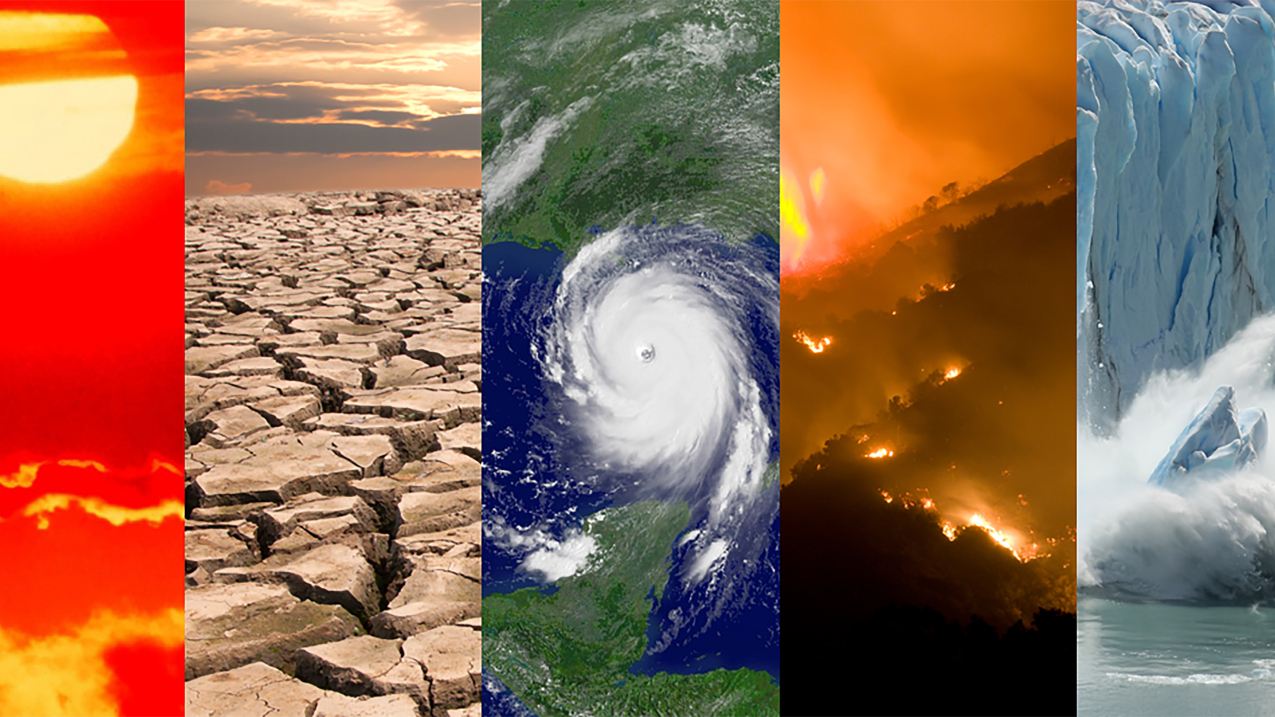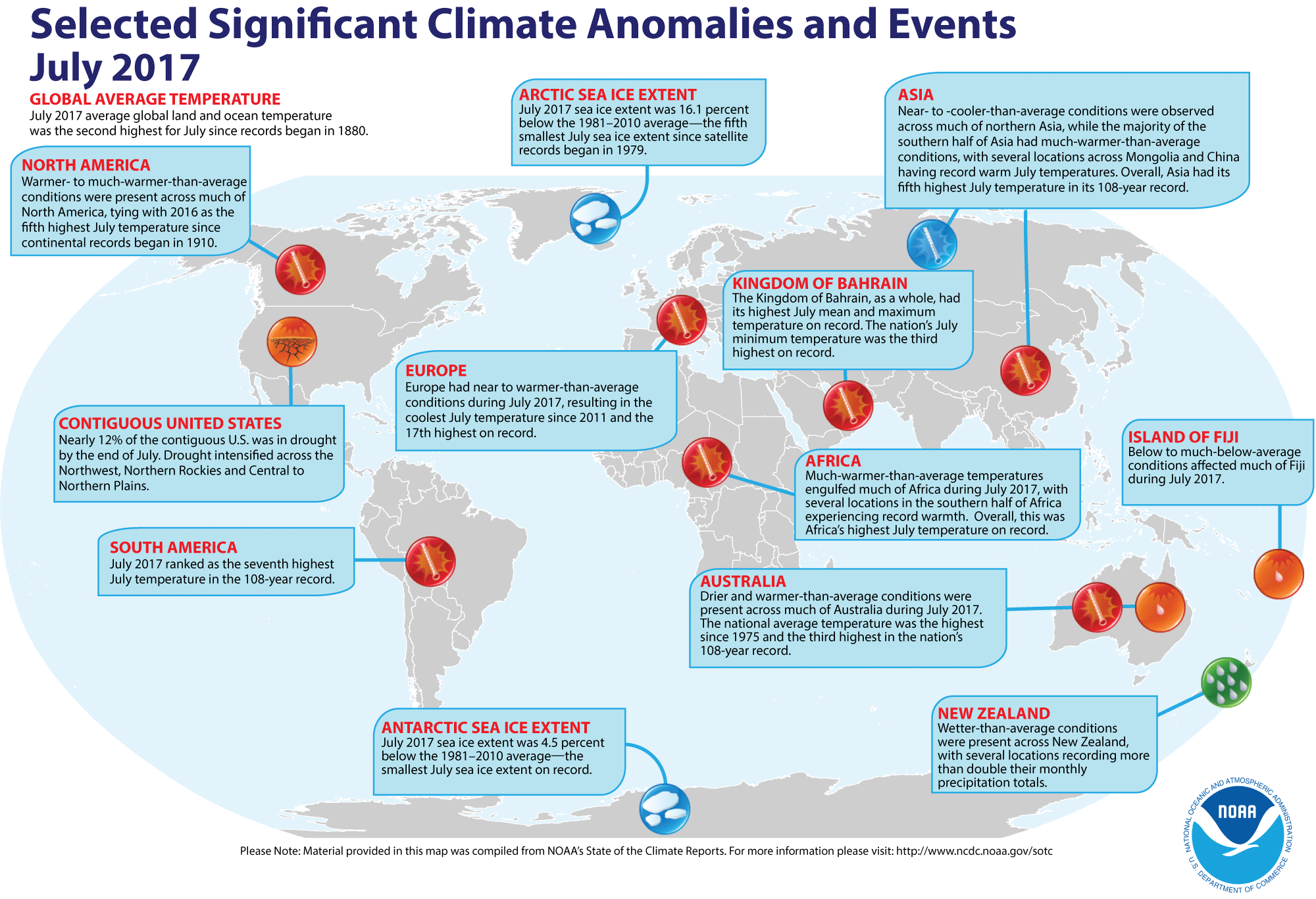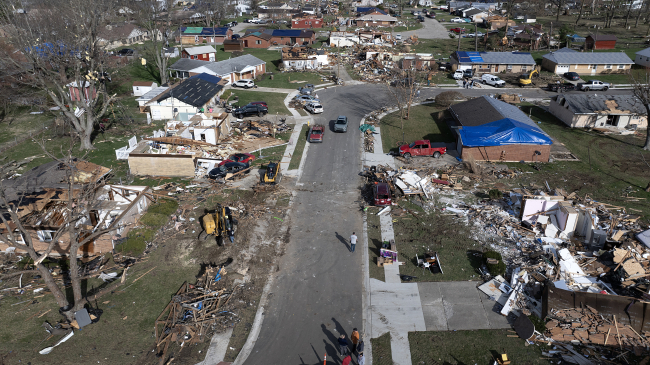Antarctic sea ice hits record low in July, and Arctic ice coverage remains small

A collage of typical climate and weather-related events: heatwaves, drought, hurricanes, wildfires and changes in sea ice coverage. (Image credit: NOAA)
Earth’s warmest month is typically July, when the strong mid-summer sun heats up large Northern Hemisphere land masses and adjacent coastal areas. In fact, July 2017 was not only the warmest month of this year, but also the second warmest July on record, trailing the record set in 2016.
Let’s dive deeper into our monthly analysis to get a fuller picture:
Climate by the numbers
July 2017
The average global temperature in July was 1.49 degrees F above the 20th-century average of 60.4 degrees, according to scientists from NOAA’s National Centers for Environmental Information. This was the second-highest average temperature for July in the 138-year climate record, trailing last year. July 2017 marked the 41st consecutive July and the 391th consecutive month with temperatures at least nominally above the 20th-century average.
Year to date | January through July 2017
The year-to-date average temperature was 1.62 degrees F above the 20th-century average of 56.9 degrees. This was the second-warmest for this period, a quarter of a degree behind the record set in 2016.

Other notable climate events and facts around the world last month included:
- Record and near-record sea ice at the poles: The average Arctic sea ice extent (coverage) for July was 16.1 percent below the 1981-2010 average, the fifth smallest for the month since satellite records began in 1979. The average Antarctic sea ice extent was 4.5 percent below average, the smallest on record for July.
-
Warmer-than-average lands and oceans: The globally averaged land-surface temperature (warmest for the month of July) and the sea-surface temperature (third warmest for July) ranked second highest on record for the year to date.
-
Africa and Oceania led the continents in warmth rankings: Africa and Oceania had their warmest July on record; North America (tied with 2016) and Asia, had their 5th; South America, its seventh; and Europe, its 17th.
More: You can find NOAA’s report and download related maps and images by visiting the NCEI website.
Media contact
Brady Phillips, 202-407-1298



